biologic sensing/systems research
Table of Contents
EEG
See research at: openeeg
Also: http://arstechnica.com/civis/viewtopic.php?f=26&t=178288
GSR
Galvanic Skin Response (also for plant sensing):
Schematic
Several designs were tested based on:
- Voltage divider
The simplest voltage divider circuit as detailed at:
was also tested and gave poorer results when compared to more complex Wheatstone bridge style detailed below.
- Wheatstone bridge
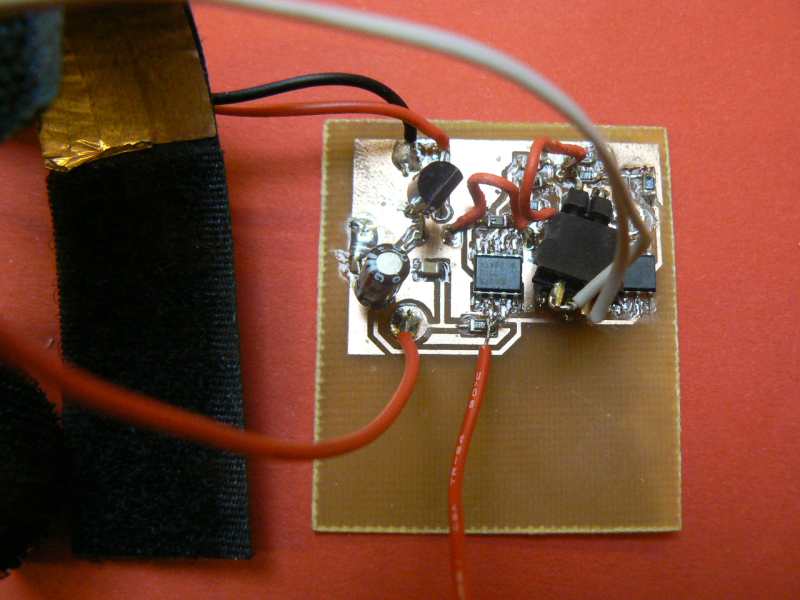
A design using OPA336 and following http://courses.cit.cornell.edu/ee476/FinalProjects/s2006/hmm32_pjw32/index.html was constructed. At first it appeared to give good results but when tested after six months the results were very flat. This could have been due to oxidation of copper tape electrodes and the design should be retested
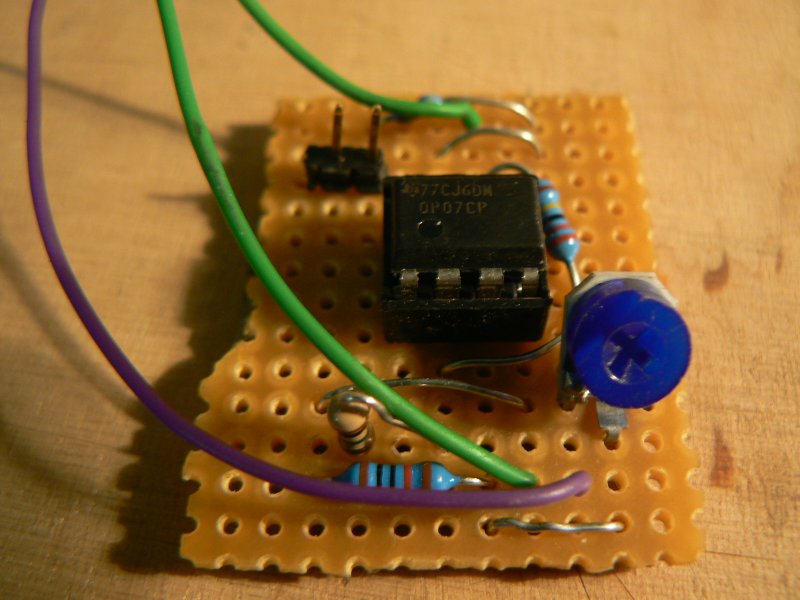
In the meantime, a new design based on: http://web.media.mit.edu/~msung/VitaMon/vitamonschematics.htm but using an op07 op-amp was tested with silver foil electrodes (below). After minor adjustment of the offset potentiometer, the GSR seems to work well, responding to changes in breathing, relaxation and excitement. The signal from this GSR is fed to the input of Arduino/ATmega8 ADC - we record 20 samples 1 ms apart and average these.
Question: why is the offset adjustment always necessary? Without adjustment the GSR plot/values remain very flat
Further notes (8.3.2011): adjustment seems at first sight to be necessary because of changes in placement of electrodes and perhaps changes in environmental/skin conditions. A short series of tests was made with the clothespeg electrodes (below) which did not need any adjustment between cold starts of apparatus seperated by say 10 minutes. Values around 500-600 were displayed with sharp variations visible a few seconds after deep in-breath. Offset resistance measured as 6K to +5v connection. Later tests (say half an hour) needed more adjustment (as did the velcro), and even then results were not so clear? The clothes-peg arrangement with this circuit seems the most solid (to test with different op-amps, think on new electrode possibilities).
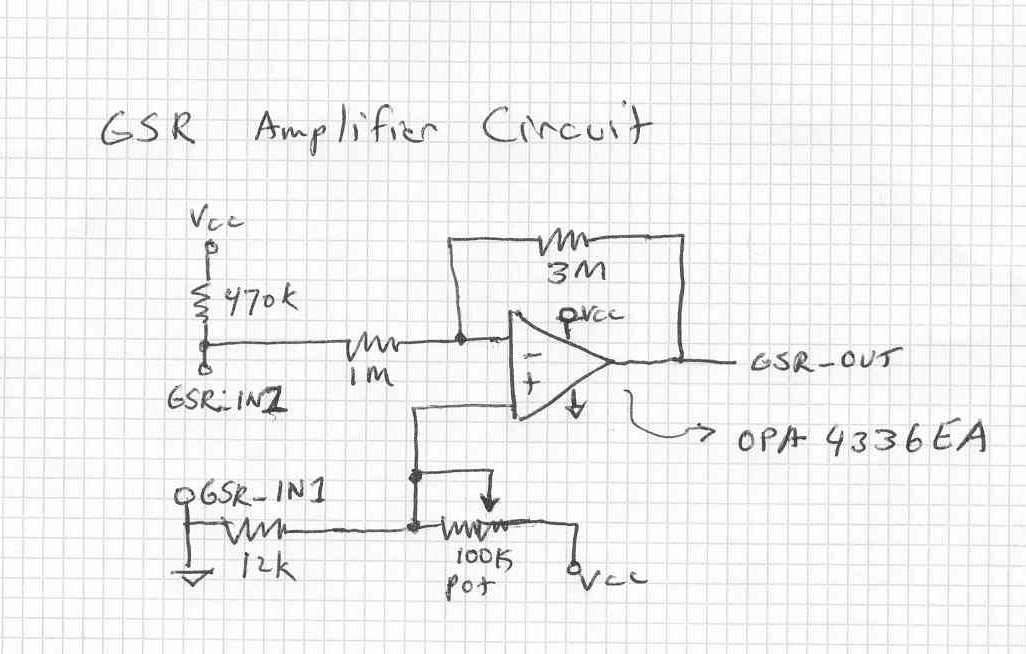
Electrodes
Constructed with copper tape, velcro and aluminium cooking foil after: http://extremenxt.com/gsr.htm
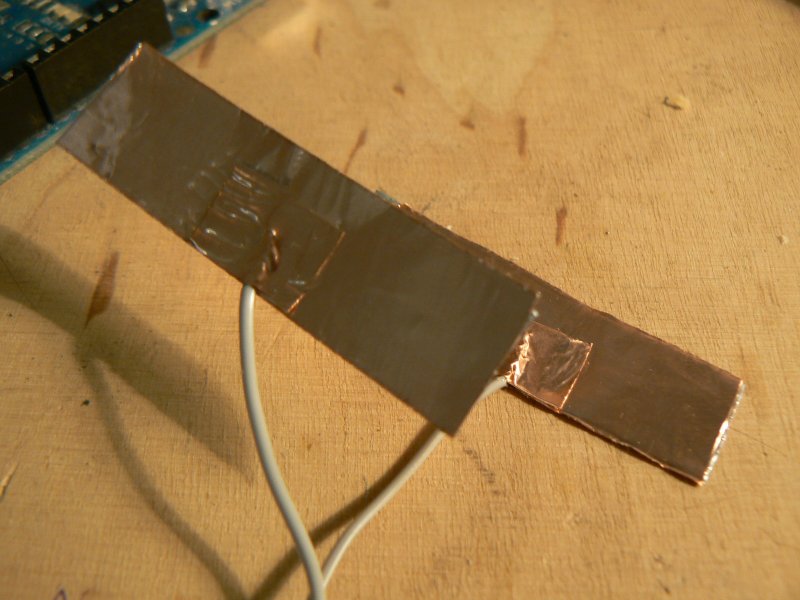
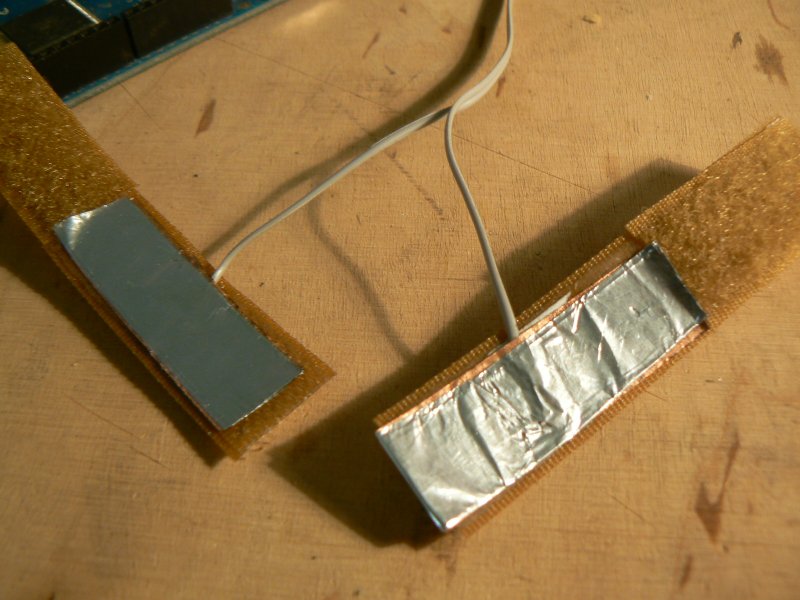
Copper tape with conductive adhesive is stuck to folded strips of tinfoil. Wire is soldered and taped to the copper tape backing of these new foil strips. These are then stuck on the adhesive side of the velcro as shown above. The electrodes are placed on the tips of the 1st and 2nd fingers.
Tests were also made with two paper clips on the ends of fingers (painful) and clothes-pegs with foil (too tight but working well).
Some results
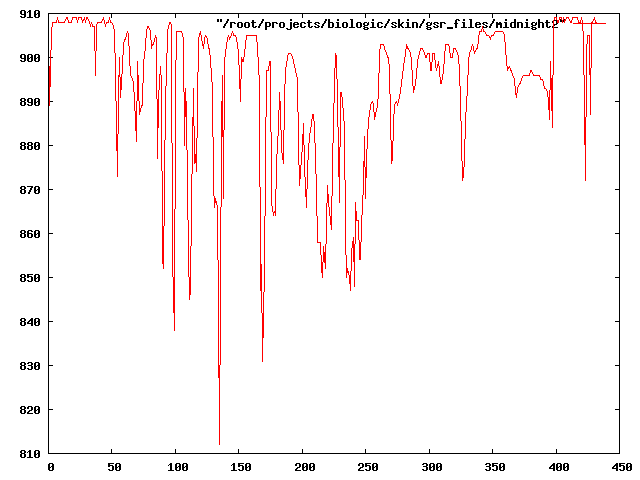
Plotted using gnuplot:
set term png set output "midnight.png" plot "/root/projects/biologic/skin/gsr_files/midnight2" with lines
Also live plots using:
a=0 load "looper"
Entry into minicom and logging to file:
a=a+1
plot [0:][400:600]"/root/test2" with lines
# plot "/root/test2" with lines
pause 0.1
if(a<50000) reread
Impedance
See below under plant sensing…
Reference/links
Lie detector from Elektor (date?):


Links and overview: http://www.chris3000.com/archive/galvanic-skin-response/
Simple lie detector: http://www.hackcanada.com/ice3/wetware/lie_detector_circuit_2.html
http://regexp.bjoern.org/archives/000187.html
http://www.sciencetoymaker.org/lieDetec/make.htm
Forensic psychophysiology using the polygraph: scientific truth verification, lie detection. James Allan Matté
Plethysmography
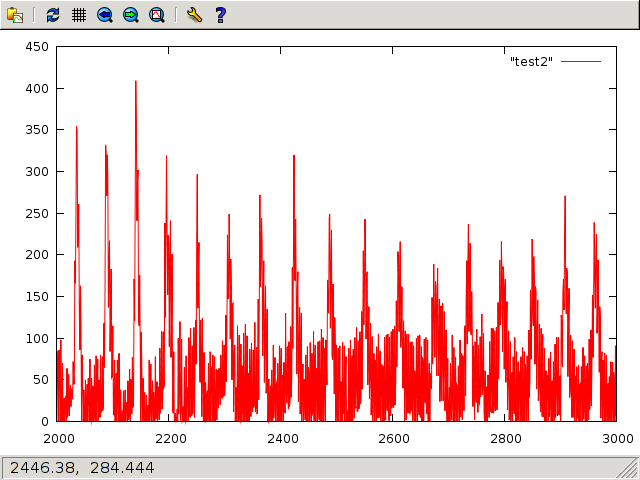
Measuring changes in blood volume within the finger/on the earlobe (the beating of the heart). The clothes-pegged infrared LED/phototransistor (SFH487-2 and SFH309 (FA would make more sense) from reichelt) duo was implemented following the links below. Note that the anode (to 100 Ohm resistor and thence to +5v) of the SFH487-2 infrared emitter/photodiode is the shorter of the two leads. The filter/amplifier circuit was constructed following the first of the links below, but leaving aside the diode offset. A short arduino software reads values from the amplifier every 10 mS, and prints these to serial port, allowing for easy plotting with gnuplot scripts (see above).
Hardware
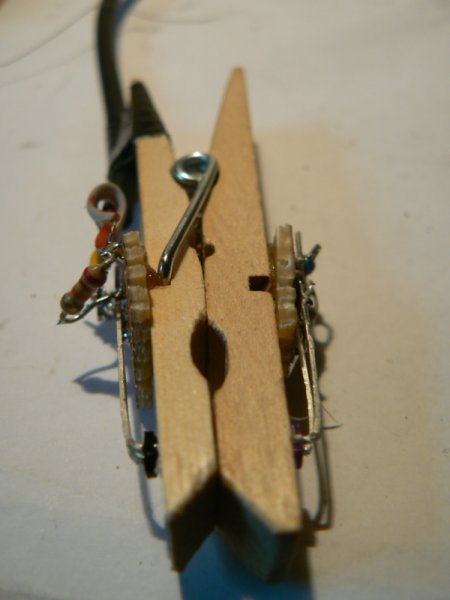
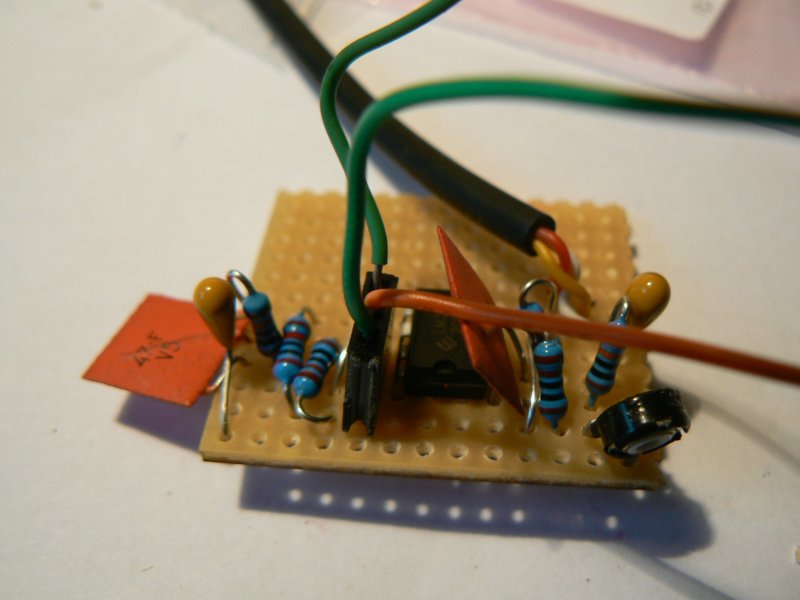
Plant sensing
With reference also to: http://lib.fo.am/plant_sensing
Electricity in plants
Scott, Bruce I. H., "Electricity in Plants", Scientific American, Oct. 1962, S. 107-115
at: http://www.r-j.de/literatur/electricity.pdf
"Electrical disturbances similar to the nerve impulse are associated with a number of plant life processes. It seems likely that these currents and fields somehow influence plant growth and development"
[p107]
The root of a bean shoot growing a weakly conductive medium, for example, is found to act as an electric generator sending tiny current into the medium and back through the root […]
The instrumentation must be highly sensitive, because only about a hunderdth of a microampere flows across a square millimeter of root surface […]
Without any stimulation the potential near the root starts to oscillate in a rhythmic fashion, the oscillations continuing for perhaps several hours […] The periods of oscillation for the roots we have studied are about five minutes.
[p110]
Note also: solutions of potassium chloride or sodium chloride
Karlsson, L., "Instrumentation for Measuring Biolectrical Signals in Plants", The Review of Scientific Instruments, Vol. 43, Nr. 3, March 1972, S. 458-463
at: http://www.r-j.de/literatur/karlsson1.pdf
Remote Biodynamic Sensing and the "Biogram" by Michael Theroux
at: http://www.borderlands.com/newstuff/research/rbs.htm
Detecting Biodynamic Signals by Michael Theroux
[referring to the work of L. George Lawrence inc. schematics]
at: http://www.borderlands.com/archives/arch/detectin.htm
L.George Lawrence: More Experiments in Electroculture
at: http://www.swtpc.com/mholley/PopularElectronics/Jun1971/PE_Jun1971.htm
- Elektrometer
Design following Elektor Mai 1977:

- Resistance
Measured with a Wheatstone bridge (combined with transistor, and op amp) based on the following design from Peter Lay: Experimente mit paranormalen Phänomenen):

Followed by LM358 inverting op-amp [two 1K resistors into + / - in and 1M poti for feedback/gain]
See also Psychotron [Elektor, Juli/Aug. 1983]:


- Impedance
"Impedanzänderungsdetektor", Elektor, Mai 1977, S. 28-30
Reproduced here: http://www.r-j.de/literatur/elektor.pdf
Could be constructed using Analog Devices AD5934 or 5933:
http://www.analog.com/en/rfif-components/direct-digital-synthesis-dds/ad5934/products/product.html
see also:
http://instruct1.cit.cornell.edu/courses/eceprojectsland/STUDENTPROJ/2005to2006/yz226/
- AD5933 Impedance measurement (first tests and design):
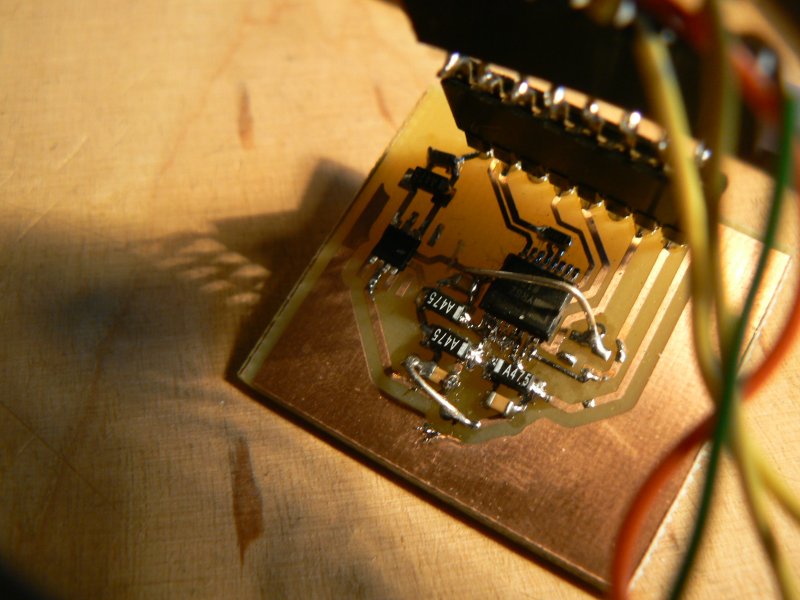
To be used within plant sensing, soil analysis and bioimpedance measurements.
- Schematic:
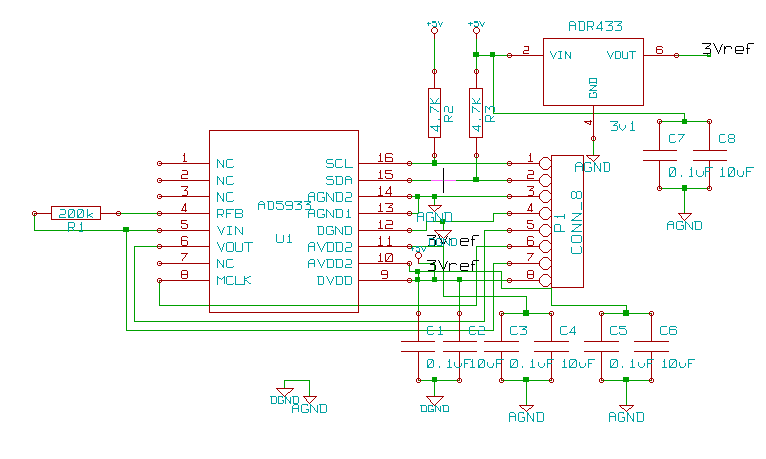
- Board:
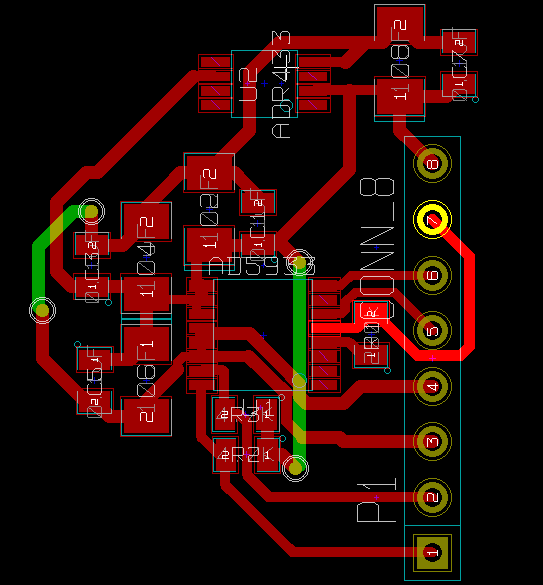
- Kicad files:
- Arduino C source code:
(based heavily on http://www.mwlyon.com/design_services_pages/arduino.html )
- Results:
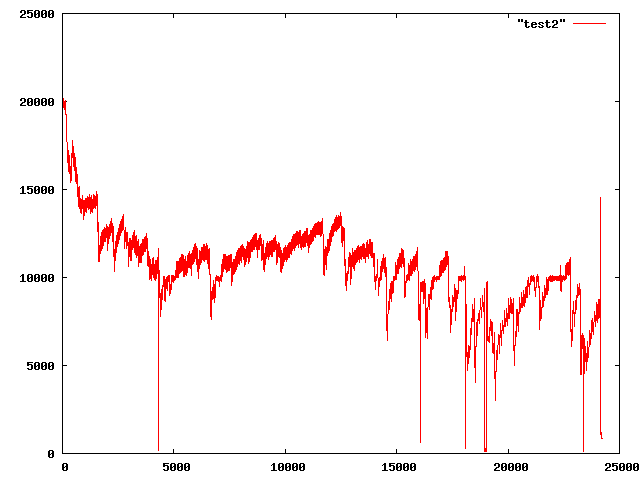
Foil skin electrodes (as used with GSR above) at 10 KHz.
- AD5933 Impedance measurement (first tests and design):
Further general links
collection of resources: http://web.archive.org/web/20031202180422/home.earthlink.net/~wearable/biopsy/
http://openeeg.sourceforge.net/arch/2001-11/1260.html
non: http://www.vslvx.org/EMLI/II/
non: http://www.art-house.at/goto/bio/on/hardware/
non: http://www.univie.ac.at/cga/courses/BE513/Projects/
http://www.psychobotany.com/overview.htm
http://www.r-j.de/pflanze.htm [with many links to PDF articles]
http://airlab.elet.polimi.it/index.php/Wireless_Affective_Devices
Polygraph: http://courses.cit.cornell.edu/ee476/FinalProjects/s2007/jsc59_ecl37/jsc59_ecl37/report2.html
555-based soil/earth resistance: http://emesystems.com/OL2mhos.htm
Date: 2013-03-28 15:56:32 GMT
HTML generated by org-mode 6.31trans in emacs 23